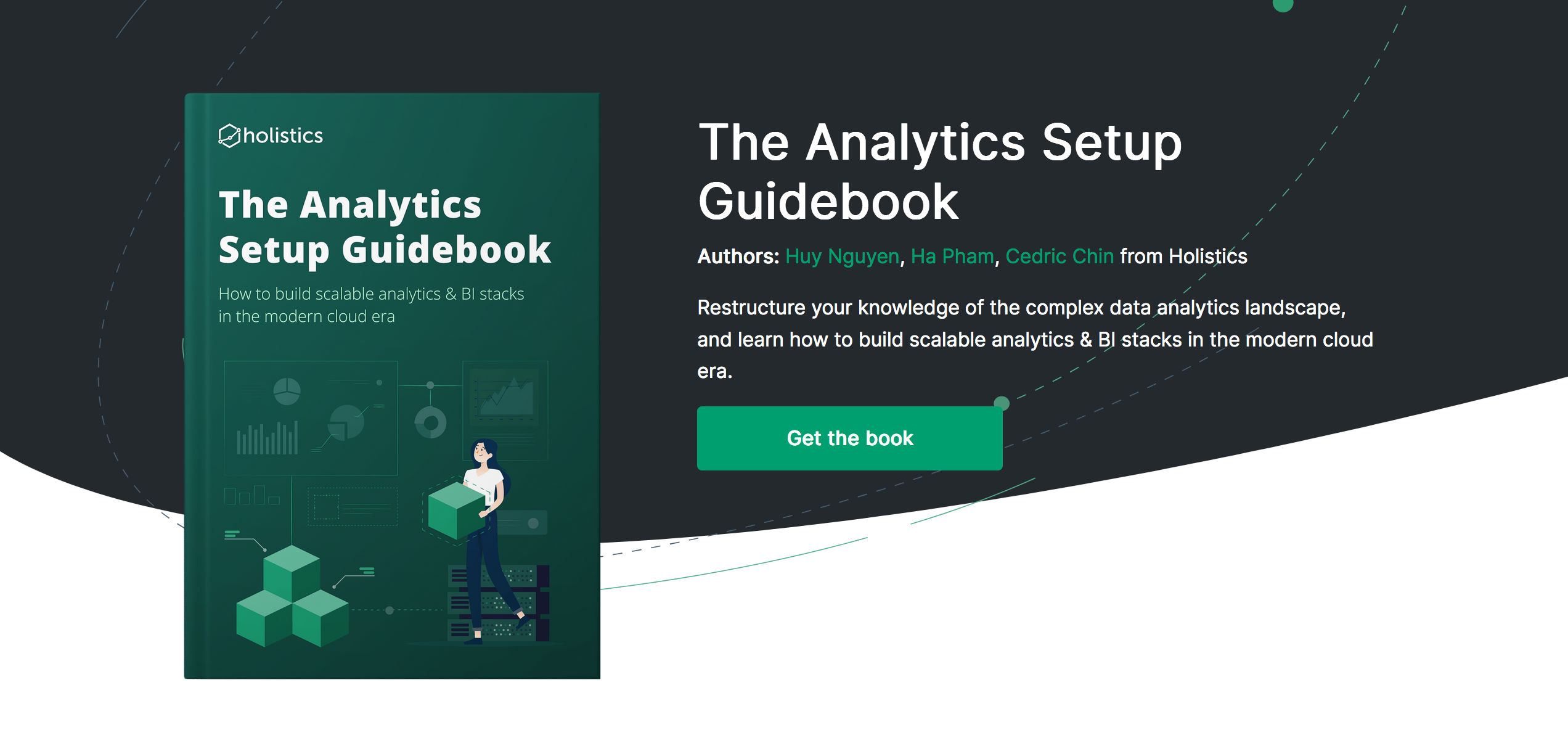Announcing The Analytics Setup Guidebook: The First Principles Approach to Data Analytics
We're releasing The Analytics Setup Guidebook, a first-principles approach to data analytics. Get it free today!

[Skip the intro - get the book here]
Let's face it: data analytics is confusing.
Data analytics isn't just confusing for new practitioners. You might be an old hand, and you look up from your work to find a bizarre new world of cloud-based columnar databases. Or — worse! — you've been unfortunate enough to be given the task of setting up a reporting function in your company, and you don't understand where to start.
If you've spent any amount of time in data analytics, there is a good chance that you know how it feels like to look out at the world of analytics tools and balk at the sheer number of competing approaches.
Why is Data Analytics So Confusing?
One reason data analytics is so confusing is that it's been around for a long time — about 60 years, last I checked.
But a more compelling reason for this situation might be that approaches in data analytics tend to stick around a lot longer than they do in neighbouring fields like software engineering or devops.
Because this is the case, newcomers often have to wade through a handful of both new and old approaches, presented side-by-side, when they are setting out to build an analytics capability in their company.
In 2014, I co-founded Holistics, a self-service business intelligence tool. I quickly felt the effects of that confusion on the data analysts, data engineers and occasionally hapless startup CTOs whom I had to assist. They would often say some variant of I just want a reporting function, dammit, don't waste my time! and I thought, again, about how unnecessary all of this confusion was.
Earlier this year, my team and I began working on a book to address these problems once and for all.
We call it The Analytics Setup Guidebook. We're incredibly pleased to release it today, and we think you'll find it very useful.
A Guide From First Principles
The Analytics Setup Guidebook is different from other data books in a couple of important ways. For starters, while we wrote this book for an audience of technical people, we've kept most of it at a high-enough level that it shouldn't require specialized knowledge to understand.
But there are other things that we think makes this special:
A Focus On First Principles, Not Tools
We believe that business intelligence isn't very complicated at its core: you have some data, you want to get it into the hands of decision makers, so therefore you should pick the simplest methods to get you from point A to point B, and hopefully do so in a way that scales with organizational growth.
If you strip away all the tools, all the buzzwords, and all the fancy vendor marketing, this is really the only thing you have to accomplish. Therefore, you should look out at the entire industry and organize your approach around this goal, without much regard for the processes that were commonly used in the past.
The first half of the book does just this: it lays out a modern approach to data analytics. We start from the principles, we tell you about our biases, and then we go from there.
Just Enough History To Be Dangerous
Second, we spend a bit of time laying out the history of the field. We think this is important, because understanding where ideas comes from helps you predict where the field will go in the future.
After the years that I've spent running Holistics, I realised that data professionals I speak to often have rather piecemeal knowledge of our industry. Either they weren't aware of what came before, and therefore could not see the cyclical nature of ideas in data analytics, or they hadn't yet caught up with the full implications of more recent tech developments, some of which have enabled completely different workflows from the BI tools of the past.
This book gives you just enough history to be dangerous. It allows you to place tools in the their proper place within the development of the field.
No Longer Than Two Commutes
Third, and last, we decided early on that this would be a short book, because we wanted to be respectful of your time.
On average, it's taken our beta readers about two hours to read from start to end, with many of them telling us that they've finished it within a single sitting. We've written (and edited!) it this way because we think that data professionals are too busy to read long pieces.
If you are a new data professional, you might enjoy reading this book front-to-back. But if you are an old hand at business intelligence, you can probably finish this book in less time it takes you to commute home.
Get The Book
Our goal with the book is to make business intelligence less confusing. One bar that we've used throughout the writing of this book has been the idea that we should give you 'just enough, so that you no longer feel lost'.
We hope that we've accomplished just that.
Get The Analytics Setup Guidebook Here
I hope you find the book useful, and if you have any thoughts, I'd love to hear your comments at [email protected]!
On behalf of the team,
Huy Nguyen, CTO @ Holistics.io
What's happening in the BI world?
Join 30k+ people to get insights from BI practitioners around the globe. In your inbox. Every week. Learn more
No spam, ever. We respect your email privacy. Unsubscribe anytime.

